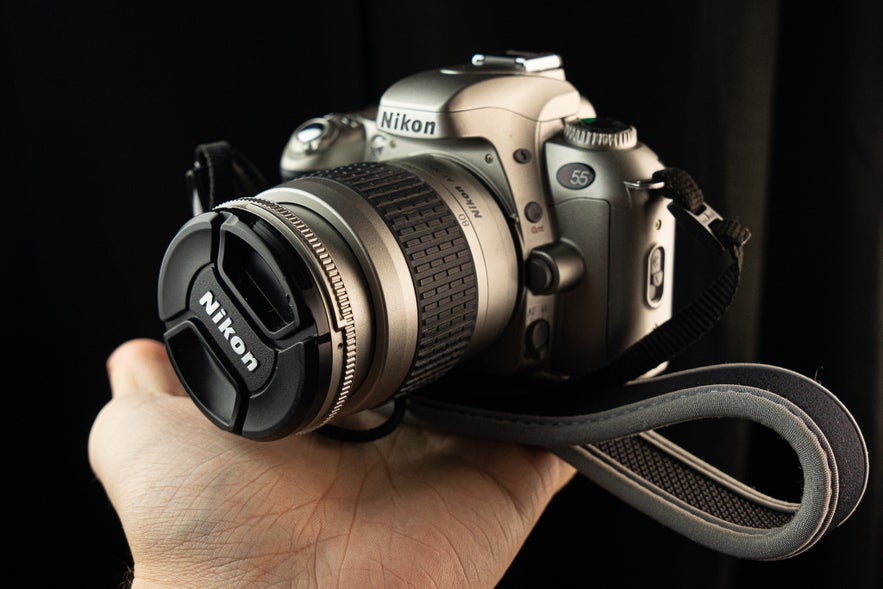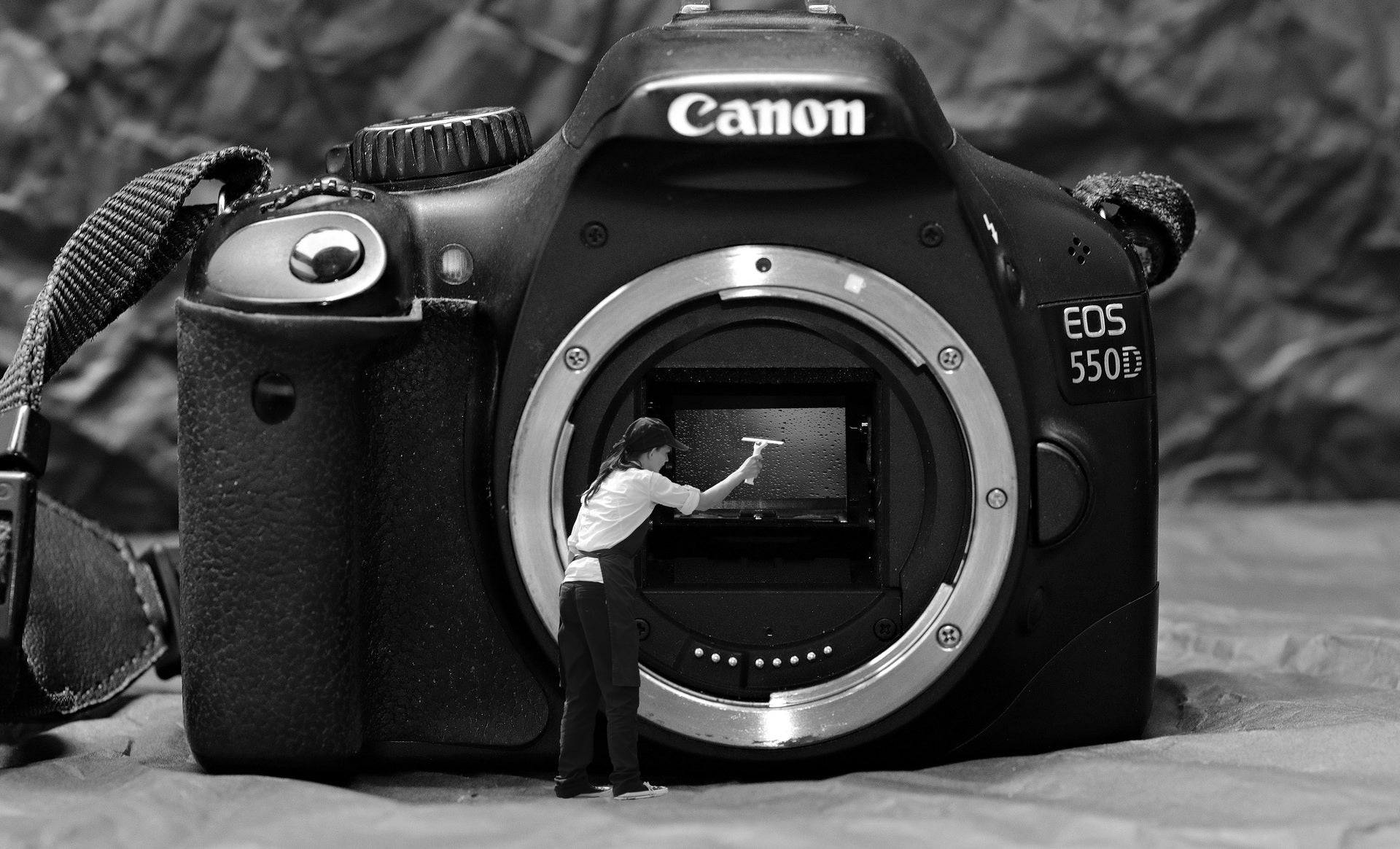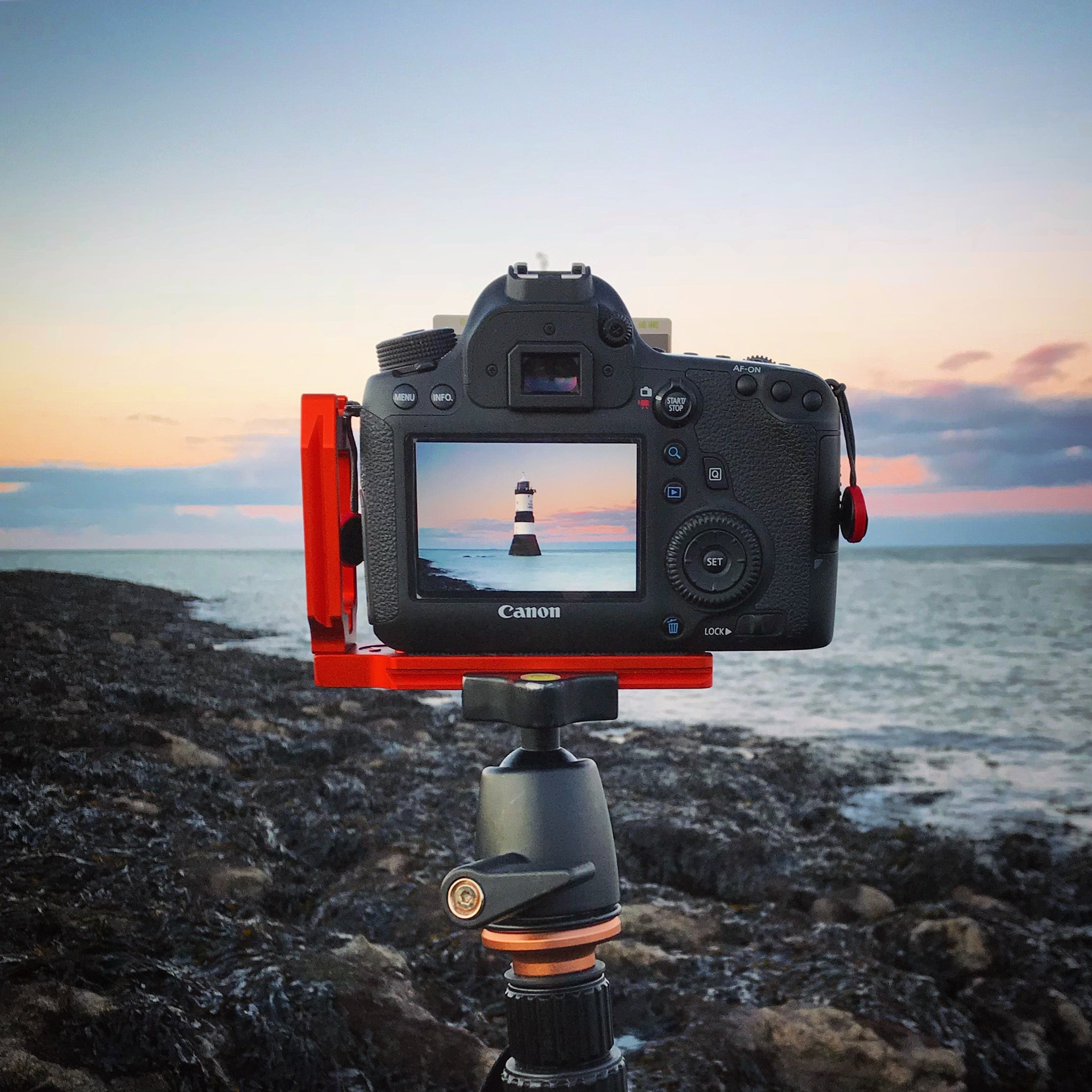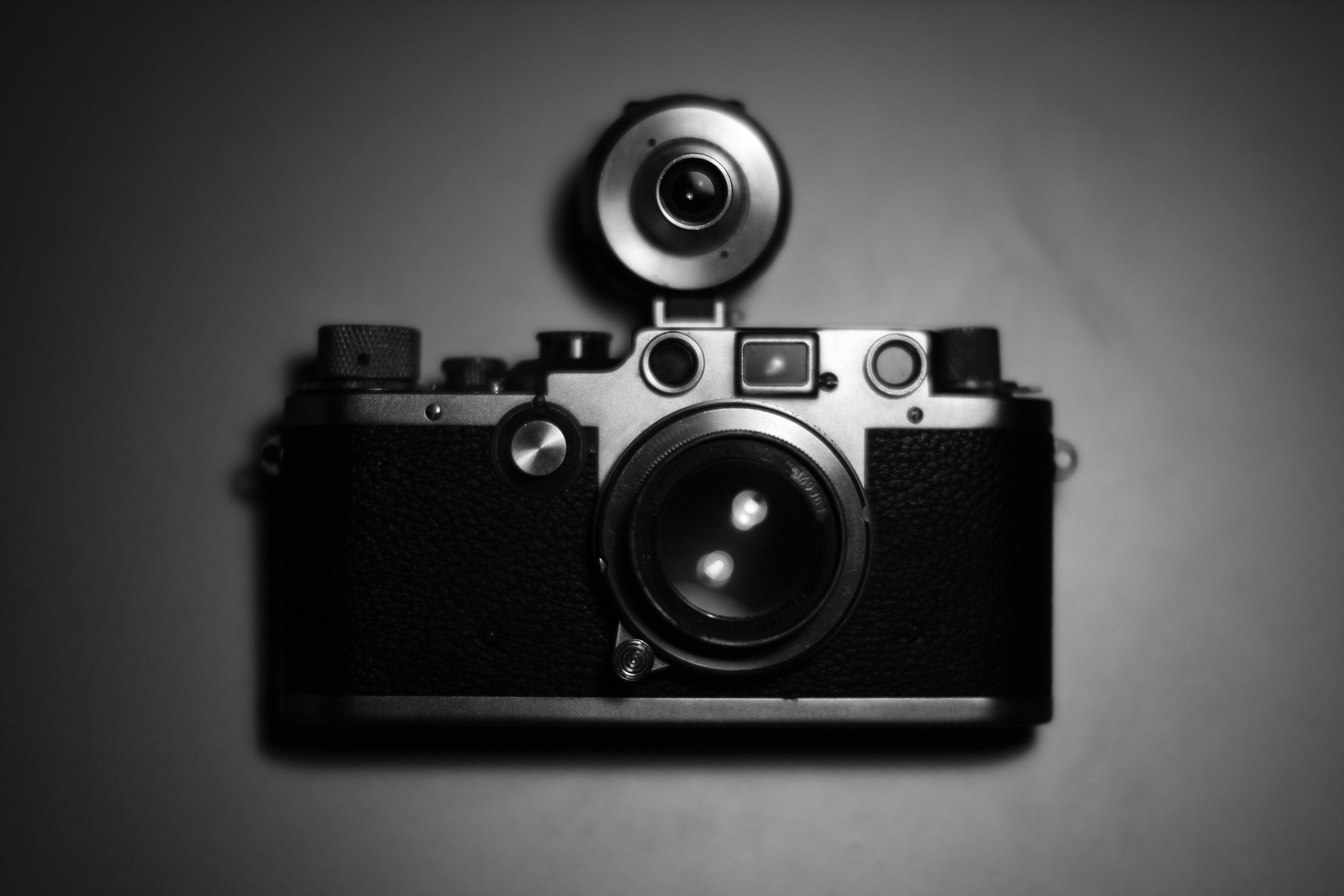
When I was about 18 years old, I saved up $265 to buy my first camera. It was gorgeous; a sleek, silver and black beauty. I was in love. It was a 35mm film SLR and for me, a person who had – up until that point – been feeding my budding photography obsession with disposable film cameras, it might as well have been a spaceship. I still have that camera, and it works just fine.
- Check out these Camera & Gear Reviews
- Discover The Best Camera Bags for 2020
- Here is the Beginner's Guide to Medium Format Photography
That was about 20 years ago and at the time, the photo lab where 18 year old me worked was buzzing about the new “digital camera” we had just begun to sell. It was the highest megapixel digital camera any of us had ever seen. The resolution? A whopping 5 megapixels.
Now, you might be wondering why I’ve just taken you on that brief stroll down memory lane. Well, my fellow photographic traveller, the reason is because today we find ourselves facing some unique circumstances when it comes to how we go about the business of making landscape photographs. Questions which, just a short decade or two ago, would have seemed incredibly unlikely.
 Film vs digital cameras – which do you prefer? Photo by: 'Adam Welch'.
Film vs digital cameras – which do you prefer? Photo by: 'Adam Welch'.
I’m fully aware that comparing film versus digital photography oftentimes tiptoes the line between friendly debate and malignant disputation from both sides of the discussion. Luckily for us, this is not going to be one of those unsavoury types of talks.
Right now, we’re going to constructively investigate both the pros and cons of film versus digital photos when it comes to landscape photography.
Film vs Digital: What’s the Difference?
This might from the outset appear to be an extremely easy question to answer and I suppose that it is, in a way. In fact, the similarities between digital and film cameras far outweigh their respective differences. That being said, the fundamental difference between the two mediums is, of course, the substrate each uses to produce a manifest image – in other words, the picture that we see.
Digital Cameras
A digital camera records a photograph by converting light into an electronic image file. This seemingly magical operation is facilitated by the image sensor and the camera’s onboard computer. While the image sensor is somewhat modern, the conceptual action of the process is exactly the same as it has been from the dawn of the photographic age.
 Yes, I only left the body caps off long enough to make the photo. Photo by: 'Adam Welch'.
Yes, I only left the body caps off long enough to make the photo. Photo by: 'Adam Welch'.
In fact, some long esteemed film camera manufacturers like Hasselblad have developed (photo humour) digital sensors which can be substituted for the original film backs. This instantly transforms the film camera into a digital camera and yet the photographic mechanism itself remains the same. What a cool time to be making photos, right?
Film Cameras
I use the term “film cameras” in an extremely broad manner. The truth is that there are many photographic methods which don’t actually use film but of course, photographic film remains the most commonly accessible non-digital form of photography today.
 Film cameras remain popular even today. Photo by: 'Adam Welch'.
Film cameras remain popular even today. Photo by: 'Adam Welch'.
Just as with digital cameras, light enters through the lens and contacts the sensor. The only difference here is that the sensor is a chemical substance (emulsion) and not a digital receptor. This emulsion is made up of light-sensitive crystals, which are essentially painted onto base layer of either cellulose acetate or polyester “film”.
Once the film has been exposed inside the camera, it contains what is called a “latent image.” The photo is technically on the film already but it must first go through a chemical development process in order to produce the manifest image which we can view with our eyes.
- See also: Best Cameras for Beginners in 2020
History of Film and Digital Cameras in Landscape Photography
When you think of the legendary landscape photographers of the past, what kind of scenes do you picture in your mind? For me, it’s difficult not to imagine a pristine mountain range or some far away stretch of arid desert. The sun is rising and in the midst stands a lone photographer, labouring beneath a dark cloth, adjusting the intricate settings of some massive camera perched atop of an equally massive tripod. Now why is that exactly?
 Landscape photography has been dominated by non-digital cameras until recently. Photo by: 'Brittany Benard'.
Landscape photography has been dominated by non-digital cameras until recently. Photo by: 'Brittany Benard'.
Until the last 20 years or so, the history of landscape photography has been dominated by non-digital cameras and processes simply because the technology of digital photography had not progressed to match the image quality produced by film. After all, landscape photography generally centres around obtaining exquisite sharpness and dynamic tonal ranges, beautifully saturated colours and the ability to produce relatively large prints. Even today, there are those who profess that film photography still excels in this area over its digital counterpart... but more on that debate a bit later.
 Film maintains a place in many a photographer's heart. Photo by: 'Adam Welch'.
Film maintains a place in many a photographer's heart. Photo by: 'Adam Welch'.
While we are currently bearing witness to the “pixel wars” rage, the resolution capabilities of even consumer grade digital sensors have skyrocketed. Digital sensors are evolving to the point where digital noise is becoming obsolete while image quality is absolutely incredible. It’s not uncommon now to see full-frame digital sensors, upwards of 24 megapixels, housed in cameras which sell for half the price of a top-tier cropped sensor camera of just ten years ago.
Thus far, the history of landscape photography has, for the most part, been written in images shot by non-digital means. Could the future history of landscape photography be written in 1’s and 0’s? It’s difficult to say. However, there is no denying that somehow, some way, non-digital photography has actually begun to make a resurgence even in the face of quickly advancing digital photographic technology. There must be a reason.
 Film never dies. Photo by: 'Adam Welch'.
Film never dies. Photo by: 'Adam Welch'.
So for the sake of conversation, we’re going to take a brief look at the advantages and disadvantages of using both film and digital cameras for landscape photography. We’ll talk about how incredibly advanced digital cameras are producing mind blowing landscape photos. Likewise, we’ll also examine some pros and cons of producing landscape photos with film. With any luck, we can hopefully see where it all comes together to make the present one of the most interesting times to be a landscape photographer, regardless of your digital or non-digital inclinations.
Is Film Photography Better Than Digital?
Perhaps the more accurate quantification of this question would be: is film photography better than digital for you. Again, I promise that this discussion will not devolve into an exercise ending with me reaching an ultimate “film is better” or “digital is better” conclusion. Instead, we’re going to have a look at the benefits and drawbacks of both digital and film as they pertain to landscape photography. Let’s do this.
Digital Photography for Landscape
Pro: Complete convenience
There’s no way around this aspect. The sheer convenience of being able to take hundreds, if not thousands, of images on a single, tiny memory card is so amazing. There's no need to worry about space in a backpack or making sure the film stays out of the elements. Plus, the ability to instantly receive feedback on your exposure and composition is beyond value.
 Digital cameras do have their advantages over film. Photo by: 'Adam Welch'.
Digital cameras do have their advantages over film. Photo by: 'Adam Welch'.
To put it into a bit of perspective, I can shoot roughly 1,300 RAW images at 36.4 megapixels each using my Sony A7R with just one 64GB SD memory card. To achieve that same image-making capacity using 35mm film would require me to carry about 36 rolls of 36 exposure film.
 That's a lot of exposures. Photo by: 'Andrey Konstantinov, Unsplash'.
That's a lot of exposures. Photo by: 'Andrey Konstantinov, Unsplash'.
That’s a big deal for a landscape photographer.
Con: Complete convenience
No, that’s not a typo. You didn’t read that incorrectly. The same convenience of digital photography which is so liberating can also be its Achilles heel. While it’s wonderful being able to see your results immediately and even more wonderful to be able to burn through frame after frame without worrying about cost, we also lose something.
 Shooting digitally can affect our intentions with photography. Photo by: 'Adam Welch'.
Shooting digitally can affect our intentions with photography. Photo by: 'Adam Welch'.
Landscape photography is about connecting your own emotions about a scene with those of your viewer. When we have unlimited frames, we also have unlimited opportunities to second guess our own intentions.
Pro: Ease of processing
Digital photography is such an important tool because it opens up the beautiful world of landscape photography to virtually anyone. Since there is no need for film or chemicals, we can go out and make our photos which can then be processed anywhere with our digital darkrooms. This makes sharing and exploring our own photography much easier and accessible.
Con: Everyone will see them differently
Strong landscape photography is a careful balance of colours, light and shadow, even when shooting black and white. Unfortunately, all of our computer monitors and mobile device screens are different. This means that your photos can appear quite different depending on how they are viewed.
Film Photography for Landscape
Pro: Relatively inexpensive upfront cost
Getting started shooting with film is laughably inexpensive when compared to digital photography, most of the time. A perfectly functioning 35mm format film SLR can be had for under $50US on a good day, including the lens.
 Non digital cameras are relatively inexpensive these days. Photo by: 'Adam Welch'.
Non digital cameras are relatively inexpensive these days. Photo by: 'Adam Welch'.
Add in the cost of a few rolls of film plus lab processing and you can be making beautiful landscape photos for under $100US all in.
Con: Time consuming
Although seen as a pro by some, film photography requires a greater investment of time. Unless you become more involved in home processing, you’ll be looking at about a week's turnaround time for mail-in development and scanning services.
 Developing film takes time. Photo by: 'Adam Welch'.
Developing film takes time. Photo by: 'Adam Welch'.
This means that you’ll have to wait to find out if you've even obtained satisfactory images, which can be frustrating.
Pro: Artistically nuanced
You might have heard of the “film look” when it comes to photos made with film. This is due to the inherent properties imparted to a photo based on the type of film and development used. For some, this is the biggest drawcard of film photography over digital. Instead of a digital file, you will be left with a tangibly organic and physical manifestation of your time spent photographing the landscape.
Con: No mercy
The very organic properties of film that make it appealing also make it cruelly fickle. Even professional photo labs can botch processing. Sometimes, a problem can happen in your camera and all your film from that epic trip to Yosemite may never have even been exposed to the light.
 Film can be frustrating, even at the best of times. Photo by: 'Adam Welch'.
Film can be frustrating, even at the best of times. Photo by: 'Adam Welch'.
With film, you will have no second chances.
Film vs Digital Image Comparisons
You knew this comparison was coming. For a bit of fun, I’ve included a few of my own photos made using both film and digital cameras of various formats. Think of it as a showing of friendly solidarity between traditional photography and digital photography – from someone who loves both. I’ve listed the type of camera and film used for each.
This first image is a bit of a rarity, as I happened to make the photo from the exact same perspective with nearly the exact same focal length using a comparable full-frame digital camera sensor and 35mm film.
 Sony A7R with Zeiss Vario-Tessar 24-70mm F/4. Photo by: 'Adam Welch'.
Sony A7R with Zeiss Vario-Tessar 24-70mm F/4. Photo by: 'Adam Welch'.
 Nikon F3 with Nikkor 85mm F/1.4 Ai-S, Kodak Ektar 100 film. Photo by: 'Adam Welch'.
Nikon F3 with Nikkor 85mm F/1.4 Ai-S, Kodak Ektar 100 film. Photo by: 'Adam Welch'.
 Bronica GS-1 with 100m Zenzanon F/3.5, Kodak Ektar 100 film. Photo by: 'Adam Welch'.
Bronica GS-1 with 100m Zenzanon F/3.5, Kodak Ektar 100 film. Photo by: 'Adam Welch'.
 Canon 5D MK3 with Tamron 35-150mm F/2.8-4. Photo by: 'Adam Welch'.
Canon 5D MK3 with Tamron 35-150mm F/2.8-4. Photo by: 'Adam Welch'.
 Nikon F3 with Nikkor 50mm F/1.8 Ai-S, Kodak Ektar 100 film. Photo by: 'Adam Welch'.
Nikon F3 with Nikkor 50mm F/1.8 Ai-S, Kodak Ektar 100 film. Photo by: 'Adam Welch'.
 Nikon F3 with Nikkor 85mm F/1.4 Ai-S, Rollei IR 400 film. Photo by: 'Adam Welch'.
Nikon F3 with Nikkor 85mm F/1.4 Ai-S, Rollei IR 400 film. Photo by: 'Adam Welch'.
 Sony A7R with Sigma 24mm F/1.4. Photo by: 'Adam Welch'.
Sony A7R with Sigma 24mm F/1.4. Photo by: 'Adam Welch'.
Summing Up…
Comparing film versus digital cameras for landscape photography is much the same as comparing thick and thin crust pizza; sure, some people prefer one over the other but in the end, it’s all pizza. There will always be a contention of methodology between film and digital photography. The important thing to remember is that the true enjoyment and resulting value to be found from landscape photography comes from the appreciation of its inherent values, which fall outside the realm of technical or mechanical application. Film and digital photography both have their merits and both have their limitations.
Now I'll refer back to the question posed earlier about what you see when you envision the quintessential landscape photographer at work. Sure, we all have different versions in our minds but in the end, it’s the image of a person immersed in the landscape with their camera that sticks with us – not whether that camera is loaded with film or a digital sensor.
It is the experience of making the photograph that keeps us shooting.
About the author: Adam Welch is an adventurer, photographer and author based in the USA. You can find more of his work on his website or by following him on Facebook and YouTube.
Which do you prefer – shooting with film or a digital camera? What are the reasons behind your decision? Share your thoughts by leaving a comment below!











